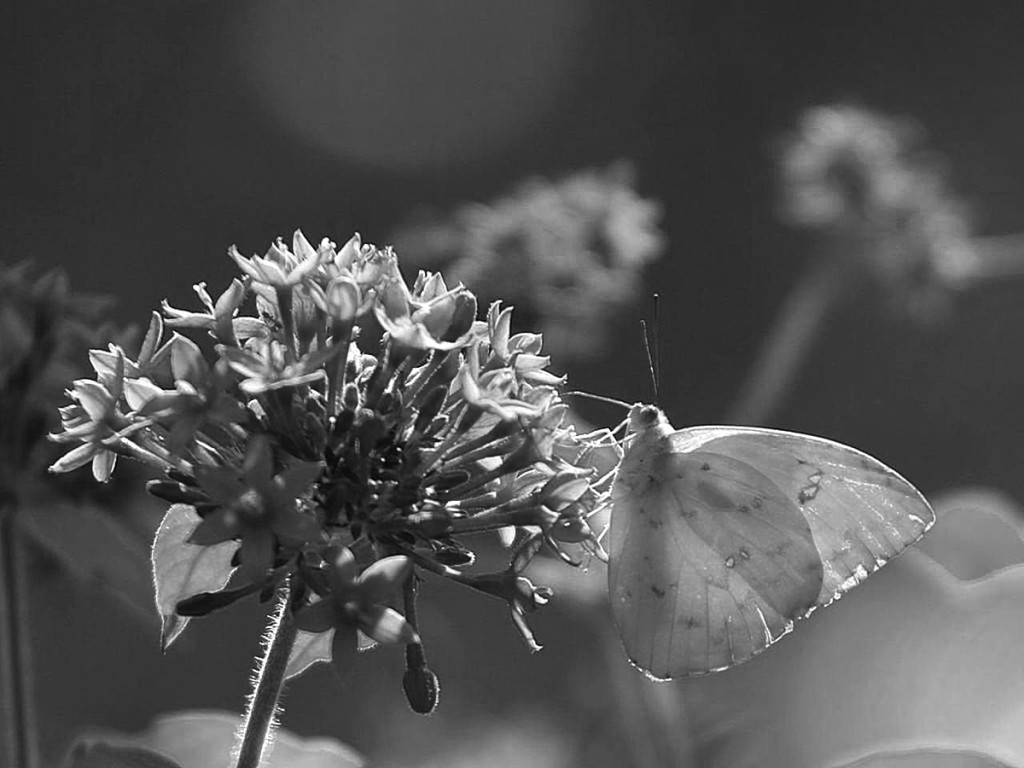Sulphur Butterflies
Along the sandy roads in Mason County grows the Partridge Pea. A member of the bean family, its feather-like leaves are familiar to many. The leaves of Partridge Pea have the interesting habit of folding up in the evening and unfurling in the morning. An interesting habit that undoubtedly protects the plant from cool nights. It produces large yellow flowers that bloom throughout the summer.
Those flowers are important for a myriad of bumble bees. You can often “hear” Partridge Pea before you see it. The drone of bees is profound in healthy stands of the plant. In fall, the plant produces a long, slender bean that is packed with neatly spaced square seeds. Each seed looks like pieces of tiny, black “Chiclets” gum. As the pod dries out and turns brown, they will spring open if disturbed, casting the seeds several feet away from the plant. Again, it is actually something you can hear as the tiny Chiclets shoot through the prairie. These seeds and the unique dispersal are important. This plant is one of the few prairie annuals, and it only grows from seeds cast off the previous season. I have known many a prairie gardener who cut off their Partridge Pea when they are done blooming, then lament that they don’t see the plants the following year. If you want a prairie annual to be a part of your plantings, you need to let it complete its life cycle and go to seed. So let the dying stalks stand and ripen.
As I drive along the roads of Mason County on a sunny late August day, something besides me is looking at these plants…. A large yellow butterfly with wings the size and color of lemon slices flutters through the air. The Cloudless Sulphur Butterfly is numerous where its food source is plentiful, and the wet summer was good for Partridge Pea. But it is not the flowers that attract this beautiful butterfly, rather it is the leaves of the plants. This prairie annual is the host plant for the caterpillar of the Cloudless Sulphur Butterfly. The caterpillars hatch and begin to eat the leaves of Partridge Pea in early summer. The Caterpillars themselves can vary in color from greenish to yellow. After feeding and growing several thousand times in size from when they hatch, they pupate in a wonderfully shaped chrysalis that will often be attached to the food plant. Once they emerge, they begin their dance across the summer prairie in search of a mate.
Illinois is in an interesting part of the Cloudless Sulphur’s range. This species is much more common in the south. We are actually on the far-northern edge of where they venture. The adults that lay eggs in our prairies are usually those that have migrated from the south. The generation that hatches here, and ultimately morphs into this large yellow butterfly, will likely migrate south. You have likely heard of the fantastic migratory feats of the Monarch Butterfly. They aren’t the only migratory butterfly, and the Cloudless Sulphur often gets overlooked as their resplendent cousins take up most of the attention. Granted, their migration is a bit less hazardous. Our butterflies might only go to Georgia, but we really don’t know for sure. No one is really studying their migratory patterns, so who knows? Maybe someday we will find that our yellow butterflies and the ones in South America are in fact the same ones. After all, this species has a very wide range throughout North and South America.
Butterflies are fascinating creatures, and several of our parks are fertile breeding grounds for many species. At the Tawny Oaks Field Station in Singing Woods Nature Preserve, naturalist Mike Ingram has documented as many as 16 species a week fluttering through the prairie and woodlands. We even saw a Cloudless Sulphur this summer, and Monarch counts have been increasing all summer. By mid-September we are regularly seeing over 50 a day. Many of these are part of the “super generation” that will ultimately make their way to the mountains of Mexico. Our parks are connected to the world on the wings of butterflies. Get out there and be a part of the cosmopolitan experience!

Cloudless Sulphur Butterfly
